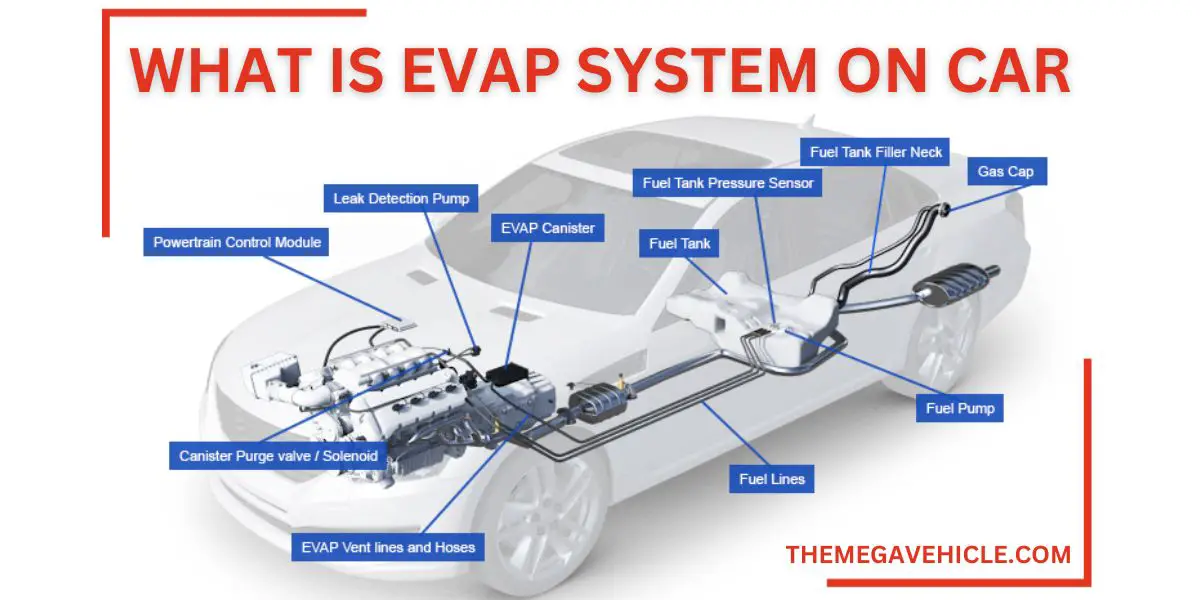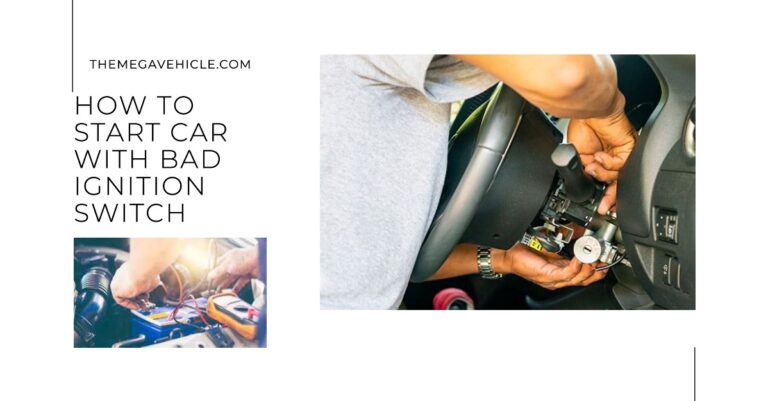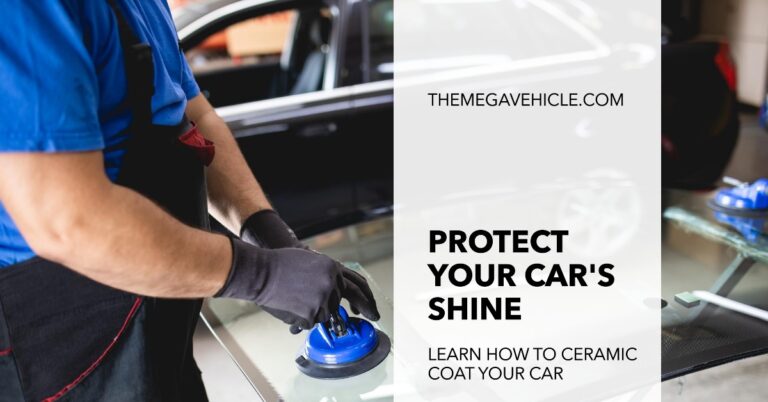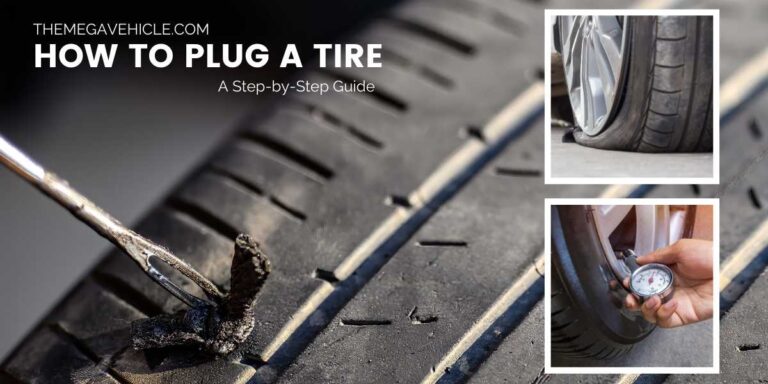What Is EVAP System On Car?

The Evaporative Emissions Control (EVAP) system on cars stands as an unsung hero, tirelessly working behind the scenes to safeguard environmental health by capturing and managing fuel vapors that would otherwise escape into the atmosphere, contributing to air pollution and ozone depletion. This sophisticated system, often overlooked amidst the engine’s roar and the wheels’ hum, plays a pivotal role in reducing harmful emissions and promoting environmental sustainability.
The EVAP System: A Silent Protector against VOCs
Volatile organic compounds (VOCs), primarily composed of hydrocarbons, readily evaporate from gasoline and are major contributors to smog formation, ground-level ozone, and greenhouse gas emissions. These harmful pollutants, if left unchecked, can lead to a multitude of environmental and health concerns, including respiratory problems, eye irritation, and impaired plant growth.
The EVAP system steps in as a vigilant guardian, preventing the release of these harmful VOCs by effectively capturing and managing fuel vapors. Through a series of interconnected components, the system traps and stores these vapors until they can be safely utilized during engine combustion.
Essential Components of the EVAP System
The EVAP system’s operation revolves around a series of interconnected components that work in harmony to capture, store, and purge fuel vapors. Here’s a breakdown of the system’s key components and their roles:
- Fuel Tank: The fuel tank serves as the primary reservoir for gasoline, and its airtight design prevents the immediate release of vapors into the atmosphere.
- Service Port: This dedicated port allows for the connection of diagnostic tools to assess the EVAP system’s health and performance.
- Filler Neck and Cap: The filler neck provides an opening for refueling, and the gas cap ensures a tight seal to prevent vapor leaks.
- Rollover Valve: This valve acts as a safety measure, preventing fuel spillage in the event of a vehicle rollover.
- EVAP Lines: These hoses transport fuel vapors from the fuel tank to the canister and purge valve.
- Charcoal Canister: The charcoal canister acts as a storage vessel for fuel vapors. Activated charcoal, with its porous structure, effectively adsorbs these vapors until they are ready for combustion.
- Purge Valve: The purge valve, controlled by the engine computer, regulates the release of vapors from the canister into the engine intake manifold for combustion.
- Vacuum Switch: The vacuum switch monitors the pressure differential between the EVAP system and the atmosphere, providing input to the engine computer for purge valve control.
How Does the EVAP System Work?
This sophisticated system comprises a network of interconnected components that work in harmony to ensure cleaner air and a healthier planet.
Step 1: Fuel Tank Vaporization
As gasoline, a volatile liquid, is stored within the fuel tank, a portion of it evaporates due to temperature fluctuations and the inherent nature of gasoline. These fuel vapors, primarily composed of hydrocarbons, pose a significant environmental hazard if released into the atmosphere. Unchecked, these vapors can contribute to smog formation, ground-level ozone, and greenhouse gas emissions.
Step 2: Vapor Capture by the Fuel Tank Vent Valve
The fuel tank vent valve, strategically positioned on the fuel tank, serves as a controlled gateway for these fuel vapors. The valve opens and closes based on the pressure within the fuel tank, preventing excessive pressure buildup while effectively capturing and directing fuel vapors to the EVAP system. This delicate balance ensures efficient vapor collection without compromising fuel tank integrity.
Step 3: Vapor Transportation through EVAP Lines
Fuel vapor lines, meticulously designed to prevent leaks, act as the transport network for these captured vapors. These hoses, akin to a network of highways, transport the vapors from the fuel tank vent valve to the charcoal canister and purge valve. Ensuring the efficient transfer of vapors throughout the EVAP system is crucial for maintaining proper vapor management.
Step 4: Vapor Storage in the Charcoal Canister
The charcoal canister, filled with activated charcoal, serves as a safe haven for fuel vapors. Activated charcoal, with its porous structure, provides a large surface area for vapor molecules to adhere, effectively adsorbing and storing them until they are ready for combustion. This storage mechanism ensures that harmful vapors are safely contained until they can be utilized for efficient engine operation.
Step 5: Vapor Release for Combustion
When the engine computer signals the need for fuel vapors, the purge valve opens, allowing vapors to flow from the charcoal canister into the engine intake manifold. These vapors, now safely captured and controlled, then mix with fresh air and are drawn into the engine’s combustion chambers. Here, during the combustion process, they are burned, providing additional fuel for efficient engine operation.
Step 6: Pressure Monitoring by the Vacuum Switch
The vacuum switch plays a crucial role in maintaining equilibrium within the EVAP system. It monitors the pressure differential between the EVAP system and the atmosphere, providing input to the engine computer for purge valve control. This ensures that the purge valve operates appropriately, preventing pressure buildup or excessive vapor release, maintaining a balanced and efficient system.
The Role of EVAP System: Combating Harmful VOC Emissions
The Evaporative Emissions Control (EVAP) system stands as a silent sentinel, tirelessly working behind the scenes to combat harmful volatile organic compounds (VOCs) emissions. These VOCs, primarily composed of hydrocarbons, readily evaporate from gasoline and are major contributors to smog formation, ground-level ozone, and greenhouse gas emissions.
Left unchecked, these harmful pollutants can wreak havoc on the environment and human health, causing respiratory problems, eye irritation, and impaired plant growth. The EVAP system steps in as a vigilant guardian, preventing the release of these VOCs by effectively capturing and managing fuel vapors.
The EVAP System’s Environmental Benefits: A Cleaner Future for All
The EVAP system’s ability to capture and manage fuel vapors contributes significantly to reducing harmful emissions and minimizing the environmental impact of vehicles. By preventing the release of VOCs, the system helps to:
- Reduce Smog Formation: VOCs are major precursors to smog, a mixture of pollutants that can cause respiratory problems, eye irritation, and impair plant growth. The EVAP system’s effectiveness in capturing and managing VOCs helps to reduce smog formation, improving air quality and protecting public health.
- Minimize Ground-Level Ozone: VOCs play a role in the formation of ground-level ozone, a harmful pollutant that can cause respiratory problems and damage plant life. The EVAP system’s ability to reduce VOC emissions helps to minimize ground-level ozone formation, protecting air quality and public health.
- Mitigate Greenhouse Gas Emissions: VOCs, when released into the atmosphere, can contribute to global warming. The EVAP system’s effectiveness in capturing and managing VOCs helps to mitigate greenhouse gas emissions, contributing to climate change mitigation efforts.
Common EVAP System Problems
- Faulty Purge Valve: The purge valve, controlled by the engine computer, regulates the release of vapors from the charcoal canister into the engine intake manifold for combustion. A malfunctioning purge valve can either fail to open or remain open, disrupting the proper flow of vapors, leading to increased emissions and potentially triggering the check engine light.
Symptoms: Rough idling, hard starting, check engine light illumination, decreased fuel economy.
- EVAP Line Leaks: Cracks or holes in the EVAP lines, which transport vapors from the fuel tank to the canister and purge valve, can allow vapors to escape, hindering their effective collection and transfer. These leaks can lead to increased emissions and potentially trigger the check engine light.
Symptoms: Strong fuel odor, check engine light illumination, decreased fuel economy.
- Damaged Charcoal Canister: The charcoal canister, filled with activated charcoal, serves as a storage vessel for fuel vapors. A damaged or clogged canister can impede its ability to absorb and release vapors as needed. This can lead to increased emissions and potentially trigger the check engine light.
Symptoms: Strong fuel odor, check engine light illumination, decreased fuel economy.
- Faulty Fuel Tank Pressure Sensor (VPS): The VPS monitors the pressure within the fuel tank and EVAP system and sends signals to the engine computer. A faulty switch can provide inaccurate pressure readings, disrupting the system’s operation and potentially triggering the check engine light.
Symptoms: Check engine light illumination, decreased fuel economy.
- Faulty EVAP System Vacuum Switch: The vacuum switch monitors the pressure differential between the EVAP system and the atmosphere. If the switch is faulty, it can provide inaccurate readings to the ECM, disrupting the system’s operation and potentially triggering the check engine light.
Symptoms: Check engine light illumination, decreased fuel economy.
Early Identification of EVAP System Issues
- Regular Maintenance: Regular vehicle maintenance, including inspections of the EVAP system components, can help identify potential issues early on. A qualified mechanic can check for leaks, cracks, and other signs of wear and tear.
- Prompt Attention to Check Engine Light: If the check engine light illuminates, it’s crucial to have the vehicle diagnosed promptly. Delaying attention to warning signs can lead to more extensive and costly repairs.
- Monitoring Fuel Economy: Keeping track of fuel economy patterns can help detect potential EVAP system issues. A sudden decrease in fuel efficiency may indicate a malfunctioning system.
- Noticing Fuel Odors: Be mindful of any unusual fuel odors inside or around the vehicle. A strong and persistent fuel odor is a potential sign of an EVAP system leak.
Maintenance Tips for a Healthy EVAP System: How to Keep Your Car’s Emission Control in Optimal Condition
Like any complex system, the EVAP system is susceptible to malfunctions that can lead to increased emissions and environmental impact. Therefore, maintaining a healthy EVAP system is essential for ensuring optimal vehicle performance and minimizing environmental impact.
Essential Maintenance Tips for a Healthy EVAP System
- Schedule Regular Inspections: Prevention is always better than cure. Schedule regular vehicle inspections with a qualified mechanic to have your EVAP system thoroughly checked. These inspections should include examining the EVAP hoses for leaks or cracks, inspecting the charcoal canister for damage or clogging, and testing the functionality of the purge valve and vacuum switch. Regular checkups can help identify potential issues early on, preventing them from escalating into costly repairs.
- Ensure Fuel Cap Tightness: A small yet crucial component, the fuel cap plays a vital role in maintaining the integrity of the EVAP system. Ensure that the fuel cap is always tightly secured after refueling. A loose or damaged cap can allow fuel vapors to escape, disrupting the EVAP system’s ability to capture and manage them.
- Choose High-Quality Fuel: The fuel you use has a direct impact on the health of your EVAP system. Use high-quality gasoline from reputable fuel stations. Impure or low-quality gasoline can contain contaminants that can damage the EVAP system’s components and affect its performance.
- Avoid Overfilling: Overfilling the fuel tank can force fuel vapors into the EVAP system, potentially causing leaks or damage. To avoid this, fill the tank until it clicks off automatically.
- Promptly Address Leaks: If you detect a fuel odor or suspect an EVAP system leak, address the issue promptly. A qualified mechanic can identify the source of the leak and make the necessary repairs to prevent further damage and emissions.
- Adhere to the Maintenance Schedule: Your vehicle’s manufacturer’s recommended maintenance schedule typically includes inspections and cleaning of the EVAP system components. Adhere to this schedule to ensure optimal performance and longevity of your EVAP system.
- Avoid Excessive Pressure: Subjecting the fuel tank to excessive pressure, such as from over-tightening the fuel cap or using a high-pressure car wash, can damage the EVAP system’s components and disrupt its operation. Exercise caution when handling these components.
- Be Mindful of Warning Signs: Pay attention to any warning signs that may indicate an EVAP system malfunction. These signs can include a strong fuel odor, decreased fuel economy, hard starting, or rough idling. Ignoring these signs can lead to more extensive and costly repairs down the road.
- Consider Proactive Maintenance: Proactive maintenance measures, such as having the EVAP system cleaned or serviced periodically, even if there are no apparent issues, can help prevent future problems and keep the system functioning optimally.
- Seek Expert Advice: If you have any concerns about your EVAP system’s health or performance, consult a qualified mechanic for expert advice and guidance. They can thoroughly diagnose any issues and recommend the appropriate course of action.
By following these maintenance tips and staying alert to potential warning signs, you can keep your EVAP system in top condition, ensuring that your vehicle operates efficiently, minimizes emissions, and contributes to a cleaner environment. Remember, a healthy EVAP system is not only beneficial for the environment but also for your vehicle’s overall health and performance.






